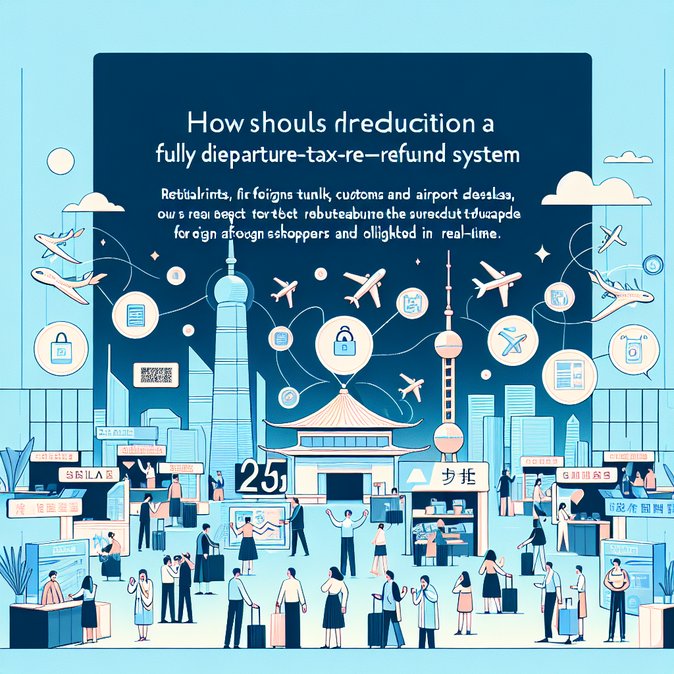
Shanghai’s municipal government quietly rolled out a major upgrade to its departure-tax–refund system on 24 October 2025. Using QR-code invoicing, real-time customs validation and an integrated back-end link to retailers’ point-of-sale platforms, the city now pledges to issue refunds to eligible foreign shoppers in “about ten minutes”—down from an average of 25-30 minutes before the change. The reform matters because tax refunds on retail purchases (up to 11 percent of the purchase price) are one of the few direct financial incentives China offers inbound visitors.
Background: China first introduced a VAT-rebate pilot in Hainan in 2011 and extended it to major cities in 2015, but clunky paper forms, manual inspection of goods, and long queues at customs desks dulled its appeal. Shanghai, which accounted for 2.42 billion yuan (≈US$330 million) in refundable sales in the first three quarters of 2025, has been under pressure from brands and tour operators to modernise the programme. The new system allows retailers such as Takashimaya and Xiaomi to seal goods at the time of sale and upload transaction data instantly; customs officers at Pudong or Hongqiao airports simply scan a code on the parcel rather than re-inspect the goods.
Practical implications: • For business travellers, the digital workflow means they can complete refund formalities airside after clearing security, eliminating the need to arrive unusually early. • HR and travel-management teams can highlight the faster rebate as a cost-saving when benchmarking per-diem budgets for Shanghai assignments. • The model sets a template for other Chinese hubs—Beijing Capital and Guangzhou Baiyun customs officials were reported to have observed the Shanghai trials.
Challenges ahead: Small retailers not yet integrated into the municipal platform risk being sidelined, and foreign payment-card interoperability is still limited to UnionPay and a handful of co-branded Visa/Mastercard channels. Observers also note that paper receipts remain mandatory if travellers exit China through a different airport than the one where the purchase was made, a common scenario for multi-city itineraries.
Even so, the 10-minute target is a tangible step toward China’s goal of becoming “Asia’s most visitor-friendly shopping destination” by 2030 and signals continued investment in the post-pandemic revival of inbound tourism.
Background: China first introduced a VAT-rebate pilot in Hainan in 2011 and extended it to major cities in 2015, but clunky paper forms, manual inspection of goods, and long queues at customs desks dulled its appeal. Shanghai, which accounted for 2.42 billion yuan (≈US$330 million) in refundable sales in the first three quarters of 2025, has been under pressure from brands and tour operators to modernise the programme. The new system allows retailers such as Takashimaya and Xiaomi to seal goods at the time of sale and upload transaction data instantly; customs officers at Pudong or Hongqiao airports simply scan a code on the parcel rather than re-inspect the goods.
Practical implications: • For business travellers, the digital workflow means they can complete refund formalities airside after clearing security, eliminating the need to arrive unusually early. • HR and travel-management teams can highlight the faster rebate as a cost-saving when benchmarking per-diem budgets for Shanghai assignments. • The model sets a template for other Chinese hubs—Beijing Capital and Guangzhou Baiyun customs officials were reported to have observed the Shanghai trials.
Challenges ahead: Small retailers not yet integrated into the municipal platform risk being sidelined, and foreign payment-card interoperability is still limited to UnionPay and a handful of co-branded Visa/Mastercard channels. Observers also note that paper receipts remain mandatory if travellers exit China through a different airport than the one where the purchase was made, a common scenario for multi-city itineraries.
Even so, the 10-minute target is a tangible step toward China’s goal of becoming “Asia’s most visitor-friendly shopping destination” by 2030 and signals continued investment in the post-pandemic revival of inbound tourism.







